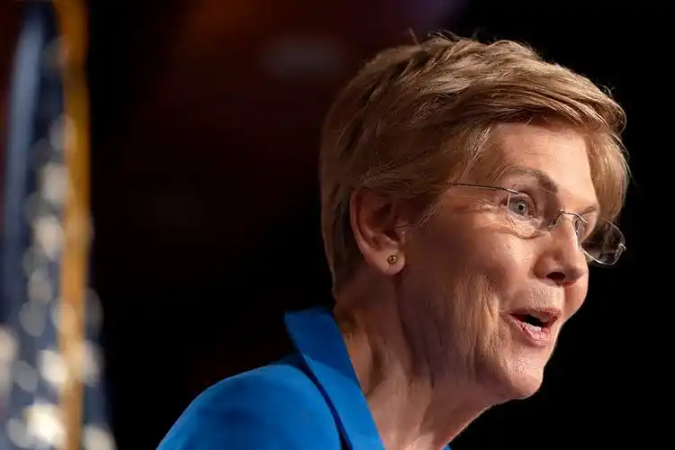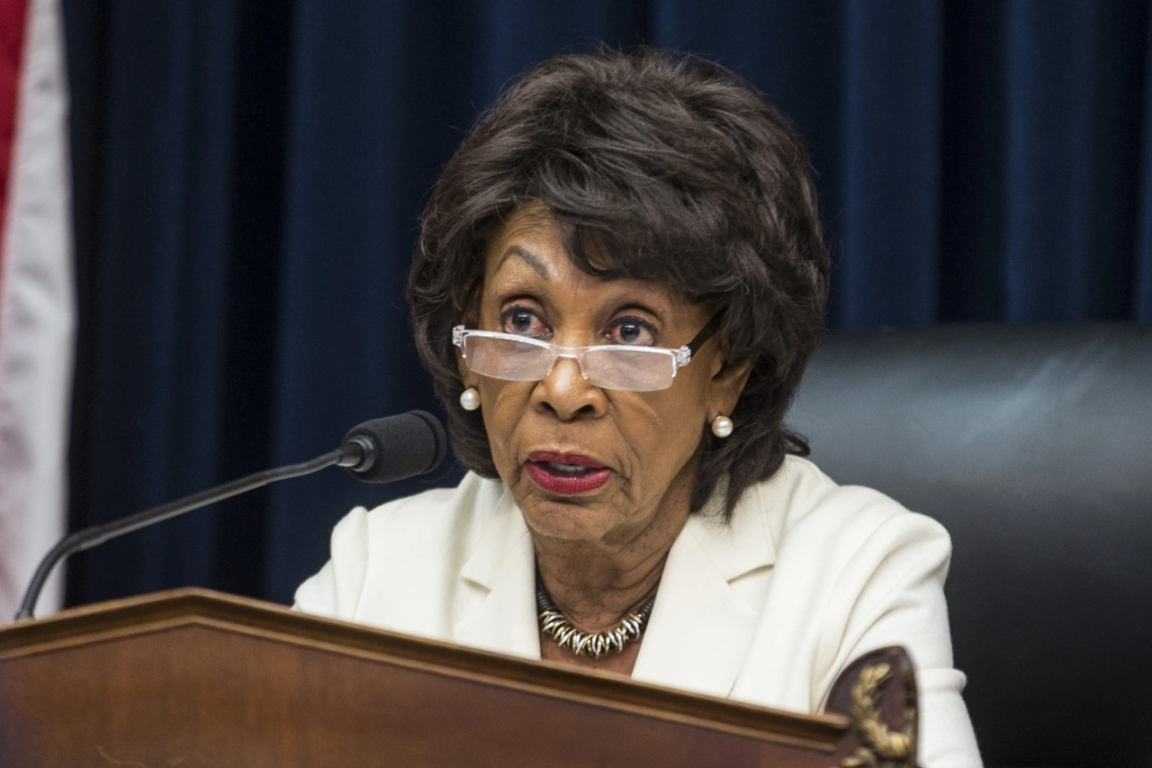Author: Bright, Foresight News
On May 1, 2025, senior Democratic Senator Elizabeth Warren, along with five colleagues, sent a joint letter to Treasury Secretary Janet Yellen, sternly pointing out that the Trump administration's plan to include crypto assets in the national strategic reserve "could pose a systemic threat to the stability of the U.S. financial system."

This 12-page letter not only lists risks such as cryptocurrency price volatility and regulatory arbitrage but also publicly questions the Trump family's financial ties to the crypto industry for the first time—World Liberty Financial (WLFI), a crypto company controlled by the Trump family, recently made headlines for its stablecoin USD1, which was revealed to have reached a $2 billion investment agreement with the Abu Dhabi government-backed venture capital MGX. The shareholder list disclosed on WLFI's official website shows that members of the Trump family hold a staggering 42% stake.
This is not the first time the Democrats have targeted Trump's crypto policies. As early as April 29, Maxine Waters, the chief Democratic member of the House Financial Services Committee, successfully blocked a joint hearing on the Republican-led "Crypto Market Structure Act," citing "conflicts of interest." In her letter to Committee Chair Patrick McHenry, she stated, "When the Trump family profits by hundreds of millions through the issuance of meme coins (TRUMP) and investments in DeFi projects, any attempt to loosen regulations will become a tool for money laundering."

The "Genetic Opposition" of Bipartisan Crypto Policies
Democrats: From "Financial Security" to "Political Settlement"
Elizabeth Warren, as a "crypto hawk" within the Democratic Party, traces her stance back to 2017. At that time, she led the drafting of the "Cryptocurrency Act," which aimed to bring 90% of crypto assets under securities regulation, requiring exchanges to register with the SEC and disclose user information. This position was further escalated in the 2025 joint letter, where she proposed limiting the scale of cryptocurrency reserves to no more than 0.5% of federal assets and mandating that reserve assets must be held in compliant stablecoins like USDC.
Meanwhile, Stephanie Murphy, the Democratic leader of the House Financial Services Committee, focused on the issue of "national security." At a congressional hearing on April 30, she presented FBI investigation data showing that money laundering transactions conducted through cryptocurrencies increased by 370% year-on-year in 2024, with 62% involving Russian oligarchs and Middle Eastern terrorist organizations. "When the Trump family engages in crypto transactions with Middle Eastern sovereign funds, we must be vigilant about whether this constitutes a new geopolitical risk," Murphy emphasized.
As a core infrastructure of the crypto ecosystem, stablecoins have become the focal point of recent bipartisan struggles. The Republican-led "GENIUS Act" attempts to establish a federal regulatory framework for stablecoin issuance, but on May 4, Democrats suddenly turned against it, with nine Democratic senators jointly opposing the current version, demanding stronger anti-money laundering measures and scrutiny of foreign issuers. This shift directly led to a sharp drop in the probability of the bill passing in the Senate to 37%.

Republicans: From "Innovation Freedom" to "Strategic Layout"
In stark contrast to the Democrats, the Trump administration is systematically advancing the "strategic" approach to crypto assets. An executive order signed on January 24 established a digital asset working group led by AI and crypto commissioner "Crypto Czar" David Sacks, requiring a report within 180 days that includes a regulatory framework for stablecoins and national crypto reserve standards. On March 6, Trump further signed an executive order announcing the inclusion of 200,000 bitcoins (approximately $18 billion) held by the federal government into the national strategic reserve and exploring the inclusion of assets like XRP and SOL into the reserve system.
This policy shift reflects the Republican Party's profound strategy regarding "digital dollar hegemony." Analysis from the strategic consulting firm Rhodium Group indicates that Trump's new crypto policy aims to migrate the dollar's settlement function from the traditional banking system to the blockchain through a "stablecoin + on-chain assets" model, thereby circumventing geopolitical friction's impact on the dollar's status.
Trump's crypto policy direction directly influences market sentiment. On March 2, when the White House announced the exploration of the possibility of crypto asset reserves, the price of Bitcoin surged by 12% within 24 hours, breaking through the $95,000 mark. However, this optimistic sentiment did not last; after the exposure of the Democratic joint letter on April 29, Bitcoin's price plummeted by 8% in a single day, with a market value evaporating by over $200 billion. On-chain data shows that WLFI sold a total of 128,000 ETH (approximately $350 million) from March 1 to April 30, coinciding with the peak of market selling pressure.
The Turbulent "Crypto Empire"
Eric Trump, as the operator of the family's crypto business, has deeply intertwined his personal wealth with the crypto industry. In addition to serving as an ambassador for World Liberty Financial, he also acts as an advisor for Japanese crypto giant Metaplanet and American Bitcoin mining company American Bitcoin, with a total annual salary exceeding $20 million.
This conflict of interest has sparked strong dissatisfaction among Democrats, with Warren stating in the joint letter, "When Eric Trump promotes the Dubai Crypto Tower at the Token2049 summit, he is essentially leveraging the political capital of the presidential family for financial harvesting." The American center-left watchdog organization Accountable.US labeled the Trump coin ranking plan as "the most blatant presidential corruption scheme in American history," believing it would open doors for wealthy donors to access the U.S. presidency, facilitating the Trump family's personal enrichment.
According to OpenSecrets data, the crypto industry donated over $120 million to federal political candidates in 2024, with 78% flowing to the Republican Party. Leading companies like Coinbase have also donated $35 million to Trump's campaign team through PACs (Political Action Committees) in exchange for policy support. This "money politics" has heightened the Democrats' vigilance, with Congressman Brad Sherman presenting evidence at the hearing that WLFI's investors include the Saudi sovereign wealth fund and Russian oligarchs, and that these funds could be laundered through crypto transactions.
Silicon Valley tech giants and Wall Street "old money" are showing a split in this struggle. BlackRock CEO Larry Fink publicly supports Trump's crypto reserve plan, calling "Bitcoin the digital gold against fiscal deficits." In contrast, renowned economist and famous gold bull Peter Schiff insists, "U.S. stock index futures and the dollar are both facing sell-offs. But gold and Bitcoin are showing completely opposite trends. Gold behaves like a safe-haven asset, rising about 1%. Meanwhile, Bitcoin's trading performance resembles that of a risk asset, falling about 2%. Clearly, Bitcoin is not digital gold."

Currently, three key bills are before the U.S. Congress: the Republican-led "Crypto Market Structure Act," the Democratic "Crypto Consumer Protection Act," and the bipartisan compromise "Stablecoin Regulatory Framework." Analysts point out that if Trump fails to push at least one bill through by November 2025, the crypto industry will face the risk of a "regulatory vacuum."
May 6 is the deadline for the White House to establish a strategic Bitcoin reserve and a U.S. digital asset reserve order, requiring the Treasury Secretary to submit an assessment report within 60 days. Will the Trump administration be able to submit this "assignment" on time?
免责声明:本文章仅代表作者个人观点,不代表本平台的立场和观点。本文章仅供信息分享,不构成对任何人的任何投资建议。用户与作者之间的任何争议,与本平台无关。如网页中刊载的文章或图片涉及侵权,请提供相关的权利证明和身份证明发送邮件到support@aicoin.com,本平台相关工作人员将会进行核查。




